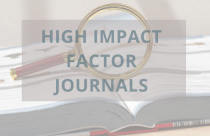What Is a “Low-Threshold” Journal in Open Access Publishing?

The Economics of Open Access Publishing
The democratic mission of open access publishing has always been built around both price as well as access. By changing the funding matrix around from subscription pay walls to Article Publication Charges (APCs), authors are able to ensure a larger audience for their work, although there has been criticism that the ability to pay the APC sometimes exceeds the quality of the work being published.
Of greater concern is the potential inversion of the basic economic model for more prestigious journals. Open access works great if your overhead (editorial and production) costs can be covered by a high enough acceptance rate to generate sufficient APC revenue. If your journal has a very low acceptance rate (around 10%), your interest in the open access model is likely to be limited given the low APC revenue that could be anticipated.
Hybrid Journals
Prestigious journals have no economic incentive to embrace the open access model without, from their perspective, lowering standards by increasing the acceptance rate. Therefore, researchers who seek to balance the cachet of publication in such journals with their social commitment to greater access to their research, have begun to experiment with a hybrid model, by which authors can pay an APC to have their specific article released as open access as the rest of the journal content remains secure behind a subscription pay wall.
At present, this hybrid model is still in its early stages, and there are already complaints that these APCs are turning out to be much higher than a comparable APC at an open access journal. In other words, authors are feeling that their individual social mission is being penalized by the more prestigious journals.
Low-Threshold Journals
In the past, the more esoteric academic journals have been punished with higher subscription prices to reflect low readership numbers—those overhead costs have to be covered. Under the open access model, “low-threshold” journals have been developed, where higher acceptance rates generate higher APC revenue to support the funding of more selective journals without having to punish the authors in those selective journals with higher APCs to cover overhead. Critics, inevitably, have dismissed these lower threshold journals as being of correspondingly lower quality since the acceptance rates have to be higher to make the math work. Advocates, on the other hand, argue that there is strong evidence that the high rejection rates of prestigious journals are nothing more than unilateral cut-offs for the number of articles the journal is willing to print, which implies that many of the articles that don’t make that cut-off are of perfectly good academic quality and deserve to find an audience elsewhere.
An Uncertain Road
Open access has only been around since the early 1990s, and though its growth has matched the growth in Internet access around the world, the economics of this model are still very much in flux. The early days of the journey were not as welcoming as you might imagine. Many established publishing houses reacted very negatively to the concept of open access, to the point where there was a backlash of price increases for many journals that put them beyond the range of many static library budgets. Since 2010, however, there has been a clear shift in position as many of the larger houses have elected to launch their own open access journals.









